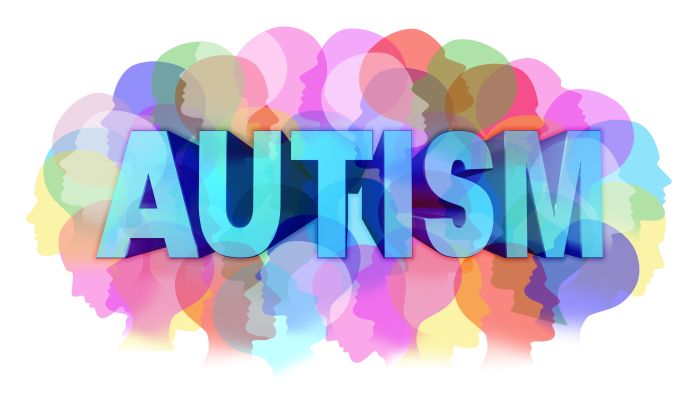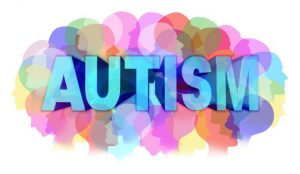
Millennium Children & Autism
Millennium Children® & Autism
In my 20 + years of teaching Medical Intuition and Millennium Children® I have met amazing people. It is with great honour I share (3) amazing school teachers whom have a gift of connecting with the Millennium Children®. They have each offered their insights and wisdom on how to empower and assist these divine souls. Form my heart thank you Vikki, Allison and Andrew for your wisdom. You are a gift to these children. If you would like to connect with the authors their email has been provided so you can connect directly. (All names changed for confidentiality)

1. Looking Beyond the Raging Fire to See the Rainbow
As I sit here, putting pen to paper, I’m reflecting on what I would normally be doing on a Wednesday morning. Normally I would be tutoring Jack*, a 12 year boy who has just left year 7 to be home schooled. Last night I got a text saying Jack wouldn’t be coming to see me today.
“Jack has had the mother of all meltdowns.” Molly* said.
“Is everything ok?” I asked.
“No. It was bad. He cut himself.”
“Are you ok?!”
“The boys are traumatised and have gone to my sister’s for the night. Jules* and I are gutted.”
I didn’t offer any explanations or reasons as to what may have been the trigger. Molly didn’t need that right now. All she needed was to know I was there for her, Jack and the rest of the family. I could have offered to go and sit with Jack to give Molly some time out but we both knew that would just increase Jack’s anxiety. At this point, Jack has had enough of teachers.
Jack is only one of the children I tutor who have been diagnosed with Aspergers. Aspergers is part of the Autism Spectrum Disorder (ASD). The children I work with have all struggled to fit into the school system and are currently home schooled, with the hope of eventually getting back to school. My heart goes out to not only the ASD children I work with, but also to the parents, siblings and extended families. I see the everyday struggle they have with trying to fit in, managing meltdowns, etc. These children are divine beings and are here to shake our very foundations. They are here to make us all look within ourselves and see the child in us all.
All a child wants is to be loved. To feel safe. To have their heart held gently. These beautiful ASD beings do send us challenges. They find it so very hard to follow the instructions society has written down. So what society tends to do is force these children into a box of grey when they are as big and as colourful as a rainbow. But they just don’t fit. Instead of trying to find a box to fit the child, we keep trying to make the child fit the box, slowly breaking the rainbow colours off bit by bit. Then the little spark of life inside the child starts to flicker with anxiety, fear and sadness. The child wants to yell out, “But I don’t fit in this box!”

The child’s spark starts to grow bigger. They feel, “If I don’t fit into this box, I’m not going to be loved”. The child tries to hold onto their spark so as not to let it get out of control. They smother it as best they can while at school, in the classroom and even in the playground. But sometimes, as hard as they try, they just can’t keep the spark at bay and eventually it bursts into a raging fire. The fire burns out of control. It can’t be tamed. We just have to watch it burn and God forbid if we get caught in the path of the raging fire. Who started the fire? It wasn’t the child. They were doing their best to try and smother the flickering spark. The fire may have been fuelled by too much noise in the classroom, by not understanding the instructions of the game in the playground or maybe just having their chair moved to a different table. We may have started to fuel the fire by something as simple as using too many words, forgetting to tell them we had rearranged the furniture, or the angry tone in our voice. We didn’t intentionally go out and light the fire. We weren’t even aware the flame was slowly growing.
The angry fire that we see has been fuelled by fear, frustration and hurt. Anger is the outward manifestation of the fear, frustration and hurt in all of us. To help keep the angry fire from erupting, we need to understand what has fuelled it. What could the child be frightened of?
Why are they frustrated? Where has the hurt come from? Taking the time to look deeper into what fuelled the anger, may just help keep the spark alive within the child, while keeping the raging fire at bay. For example, we know that making changes to their routine will increase their anxiety and fuel the flame, so we do our best to minimalise any changes. Most importantly, we must let the child know of any changes so they have time to process the new information. In all of this, always come from a place of compassion and love. Through all of this, it is important to make the distinction between the child and the behaviour. Remember the child is not their behaviour. I know at times its hard to not want to blame the child and call him naughty, manipulative, evil (all these words, and more, have been used by teachers to label the children I work with). What the child did may have been horrible but the child is not.
We can help these beautiful beings by taking the time to reflect on ourselves and work out what it is that we can do to help keep the fire at bay. For example we can do things like, being conscious of the tone of voice we are using, we can make visual lists of things that need to be done, we can make sure we have given the child as much information as we can about up coming events, etc. But the most important thing we can do is to be aware that they are struggling too. That none of this comes easy for them. So love them, show compassion even when you don’t understand. Jack is ok. His family will surround him with love. As Molly said to me, “It is going to be a hard road, but we’ll get through it.” It’s hard as a parent or a sibling to watch the raging fire of an ASD child burning uncontrollably. It’s scary and frightening. The family know the rainbow is hiding within the child somewhere but the meltdown has to subside, the fire has to burn out before the rainbow can shine through again. When you take the time to look beyond the raging fire you will see the child’s beautiful rainbow shine.
 |
Contribution by Vikki Pickering vikkipickering@gmail.com |
2. The Joys of Kids With Autism

The title of this article is ambiguous and it was meant to be! There are so many perspectives to write about autism from: that of a teacher, that of a human, that of a kinesiologist and that of political correctness. For the purposes of this article I will be attempting to cover all three.
These stories were chosen to highlight the differences between the levels of need children with autism have. There are many more stories I would love to tell but I don’t have the space here to recount them all.
Nicoli- Highlighting some of the challenges of autism
Nicoli came to my Grade One classroom in a ‘mainstream’ school, from an autistic school in the Southern Region of Victoria. He had the face of an angel and his brown curls, big blue eyes and massive smile was mesmerizing. Nicoli however was not settled for long. As a ‘low functioning’ autistic child he began to get stressed once he was fulltime in a classroom with 25 other students. He started to revert into his inner world and resorted to ‘stemming,’ (a repetitive behavior common amongst people with autism) to cope with his stress. The result was, that he would lick his hands and clap them then laugh as the spit flew into the air and all over whoever was standing closest to him, be it students, teachers or parents. As a teacher I was completely unequipped to deal with this situation. He would run around the room ‘stemming’ with all the other students laughing and distracted. The result was that it was very difficult to teach the class. An integration aid was only assigned to help three half days per week. When the aid was playing with him and could sometimes get him to do things on the iPad, he was amused and would not show this behavior. When the integration aid was not there, he would go back to ‘stemming.’ It was continuous and it would not stop and if it did, it was not for long!
I tried everything…….
• If I sat with him all day, he would stop, but as soon as I got up to help other children he would start again. Parents began to complain that I was spending too much time with Nicoli and not enough time with the other children.
• I tried ‘teaming’ him up with the gorgeous girls in the class who wanted to ‘look after’ him while we were sitting on the floor. Again, parents complained, even though this was often not longer than for 15 minutes.
• I tried giving him iPad learning games, but he didn’t know how to play them and needed to be supervised, so I would either sit with him or he would start ‘stemming’ again.
I was breaking down in tears regularly. I tried to talk with him, offer him things to play with, promised him rewards but nothing worked to stop the ‘stemming.’ I could not effectively do my job as a teacher, the other children were not learning like they needed to and I felt like a failure. The result was that I was breaking down in tears at least twice a week.
I began to break down. I told him to stop and when he wouldn’t, I would say it louder in order to ‘get through’ the stare that indicated he was in his own world. Eventually he would stop for a short time then he would start up again. I hated doing this and I hated the situation. I started to feel like I hated myself. After three months of this, I went to the vice principal and told him that either he gave me a full time aid to help with Nicoli or I would go on stress leave. He gave me a full time aid. Ultimately, Nicoli thrived with a full time aid and he is still thriving now, playing learning games on his iPad, using a communication board to tell others with he needs and as a result, he now wants to spend more time in the world. He doesn’t need to be in his own world as much to ‘escape’ the stressful outside world because he was now familiar with the school and so the frequency of his ‘stemming’ has reduced naturally. Nicoli is now happier, more capable and wants to communicate with the outside world.
My ‘gifts’ in this situation were two fold. Firstly, I learnt that students with autism need assistance and those that are ‘low functioning’ quite often need more time and more assistance than what funding will provide. Secondly, I learnt that as a teacher with 20 plus children I sometimes need to ask for help and there is no shame in this. In fact, I wish I had of asked for help with Nicoli sooner and saved myself, Nicoli, the other students and the parents the difficulties that we all went through during that time. I learnt an important lesson in asking for help sooner and expecting that as a teacher, I will be supported. This situation occurred before attending the Millenium Children Workshops. I believe that had I of been equipped with the extra knowledge I gained on these workshops that I would probably have handled this situation differently.
I met Alex at a renown private school in a prep class of 21 children. Taller and stronger than the other kids, he was also more vocal. I had been briefed about him at the beginning of the day and told that he didn’t like change so he may act out for me. I had also been told that a good ‘bribe’ for him that may be necessary was to go to the head teachers office to play with the ‘blue sand’ toy there.
There are two ways I could have approached Alex:
• With the fear and defensiveness that would come with the belief that he would act out because I was new and the consequences that may have for myself and other students.
• With the confidence that if I could get him ‘onside’ at the beginning of the day, he would be my best buddy for the whole day.
After sixteen years of teaching, I have found that most children with autism don’t trust adults to act in a way that they like. However, if you are able to befriend an autistic child the rewards are great! I took a fun approach with Alex, I joked with him, laughed with him, promised him rewards when he did the tasks required and he responded in kind. A cheeky kid with a twinkle in his eye, he tried to get away with what he could at every turn. He tried to play with lego while the class was sitting and listening to a book being read on the floor, he called another child a name when they used something he wanted and he was loud, calling out whenever he could and telling me about how I was doing things the wrong way. However, taking it all in good humour, made him my best buddy for the day. I also made sure that he got the ‘breaks’ he needed from being in the classroom, so that he didn’t feel ‘trapped’ and we got to avoid an angry episode. Because autistic children love routine and generally hate deviation from routine, that day, I asked Alex to show me how to do things because I was learning too.
So Alex:
• Told me the ‘order’ things needed to be done. Ie. Roll, tuck shop orders, circle time then instructions.
• Delivered the Cool Containers for the tuck shop orders
• Led the line and directed me to help me find the music room
• Told me about anything I had left out as part of the classroom routine, or missed, usually by telling me: ‘We don’t do it like that!’
Instead of being reactive to a child telling me how to do my job, I saw him as someone who wanted to help me do it in a structured way that he could cope with. If I could help him cope better, it would help my day go more smoothly as well. Not to mention the fact that all of my I’s would be dotted and T’s crossed when it came to the administration and general flow of the day. By the end of the day Alex was my best friend. He would go to do something cheeky and I would look at him out of the corner of my eye and smile as if to say ‘I see what you’re doing.’ He would then look at me cheekily and stop his behavior. I found out at the end of the day that other Curriculum Replacement Teachers that had been placed in the classroom on other days to fill in for the teacher, had ended up with him screaming at them and throwing temper tantrums all day. I’m so glad that the school leading teachers didn’t tell me this at the start! However, that day taught me that you can create what you want in so many ways. The power of creating what you want is all about your energy and your attitude.
This is part of what I learnt in the Millennium Children® course. It teaches so much about how to create positive relationships with children. Jean Sheehan covers the different personality types and how they react in different situations. Extra information is given with useful approaches on each personality type and how to figure out what they need. As a teacher, this is the kind of information that you intuitively know but that is never quite put into words. Once it is explained, a greater depth of understanding is developed. The Millennium Children® course serve to enhance your relationships with children no matter what the situation.
Helpful Hints for Children With Autism
Nutrition
Nicoli’s mother told me that in the past she had tried him on a gluten free, sugar free, meat free diet and for three weeks he had no autism symptoms and she felt like she saw ‘the real Nicoli.’ After three weeks, inexplicably, he went back to showing symptoms. There is growing evidence that nutritional therapy can really make a big difference to children with autism. Many people with autism have severely disrupted digestion so restoring the balance in the gut is crucial. Balancing blood sugar, identifying food allergies and nutritional deficiencies is also essential.
Movement and Autism
When I was teaching full time at a government school I witnessed a boy called ‘Charlie’ who had severe autism, was not admitted to the school due to failing the prep entry exam. This was before the government’s current inclusion policy. His parents were both gymnasts, so they enlisted a Russian gymnast to train him every night. After a year of training, Charlie went from being non-verbal with only shuffling movements to being verbal and able to walk and run well. He then passed the prep entry exam and was admitted to the school. Every night after school he would do ‘gym’ on the mats in the hall and I was amazed at his progress. As a kinesiologist, I now know that engaging in a variety of movements and exercises can ‘re-wire’ the brain and body and improve overall body and brain function.
 |
Contribution by Allison McKenzie allisonhelenmckenzie@hotmail.com |
3. Playing with children of Autism

Children with the label Autism tend to be highly intuitive, intelligent and knowledgeable in one or a couple of areas. These children require similar ingredients to all children to embrace and encourage their individual light to shine. However, those ingredients may well be needed in different doses at different times according to each particular individual.
Some of their challenges usually include:
• An obsessive focus in a particular area, often to the exclusion of meeting basic needs of the body.
• Inability to communicate and express their thoughts, ideas into verbal and physical form using socially appropriate language (spoken and especially written)
• Difficulty reading, understanding and expressing feelings and emotions within themselves and the ability to not see them in others. Not understanding empathy
• Sensitive to environments of sounds, light, textures, visual stimulus, taste/foods and smells
• Not recognising their strengths and alienating themselves feelings of unworthiness
• Poor fine and gross motor skills
• Inability to cope with change.
• How to cope with being highly intuitive to people not using their intuition around them.
• Maintaining a balance of physical, mental and emotional balance.
Some useful tools, ingredients or ideas for working with children with autism Character Strengths, skills and Learning styles – By encouraging them and yourself to know, use and celebrate their character strengths, skills and interests in creative and fun ways. Using their strengths to overcome areas where it is a perceived weakness. For example, If they love music, then create a rap or song together in helping them get ready for school in the morning or sing your spelling words. You could also dress up and speak a character they may love and role play scenarios which can lead into how these characters ‘solution solve’ conflicts and emotions. Encourage detective work in finding, recognise and learning about strengths in others. This can be cartoon characters, superheros and family members or friends. Refer to character strengths, skills and learning styles in your daily conversations.
Discover their learning style strengths (often strongly visual, but can also be auditory, kinaesthetic) or styles in Howard Gardeners’ multiple intelligences (Music/rhythmic, visual/spatial, logical/mathematical, verbal/linguistic, naturalist, intrapersonal, interpersonal, Existential). Provide Flexibility in these learning styles providing experiences in all.
Routines – These children especially thrive on routines and the safety and predictability it provides for them. Visual flowcharts, diagrams and timetables and are great. Pre warning of changes is a must as they need time to process and adjust. (even then it can seem too much for some children) Last minute changes without warning trigger the fear, fight, flight response. Practicing strategies and techniques of adjusting for when change occurs and various reminders in helping your child remembering these strategies over time. Such as having their own routine to stick to, stress ball, deep breathes, run, jump, draw, or explicit procedural posters in regular places are some of many examples that can help.
Space – Provide a space to explore and investigate their passions and interests. This can even be developed into a business enterprise to share what they love. Always a great opportunity where so many other various life skills can be integrated. Work in negotiating times for this to occur as to ensure BALANCE of basic body needs of food, water, exercise, sleep and hygiene are met.
Emotional awareness – Roleplay and modelling facial expressions in different situations is important. This needs to be explicitly taught for many children with autism. For example, in real life daily interaction explaining and matching your feelings with a face, watching and discussing movie characters, a detective game with people in the street guessing what they may be feeling or thinking, photos in an art gallery and more.
Physical Play – Encourage this with different textures and shapes for physical manipulation and muscle strength in fine and gross motor skills. This could be part of a song, chant, rap, play, paint dance or a form of martial arts. Even building and constructing houses with natural materials (incorporate their strengths if you can).
Crystal play – Students with autism generally love playing with crystals. They can often hear and intuitively know how to create grids, patterns and stories with their play and use. Encourage them to play with them as support in times of stress or worry.
Kindness play – Encourage through creating kind acts and the feeling they feel when doing one or giving one to another. ( I vision for the future energy healing with selves and each other)
Video Play – Encourage expression through developing videos and scripts or a sequence of photo images allows another option in expressing their ideas through other means than words.
Unconditional Love – Love, acceptance and support for where they are at and what they are going through in the moment. Kind, firm and consistent loving support despite the ups and downs of the emotional rollercoaster ride they may want you to join them on. Staying calm when they need it the most
 |
Contribution by Andrew Holt aholty@gmail.com |
Subscribe to future articles – Click here
![]()



